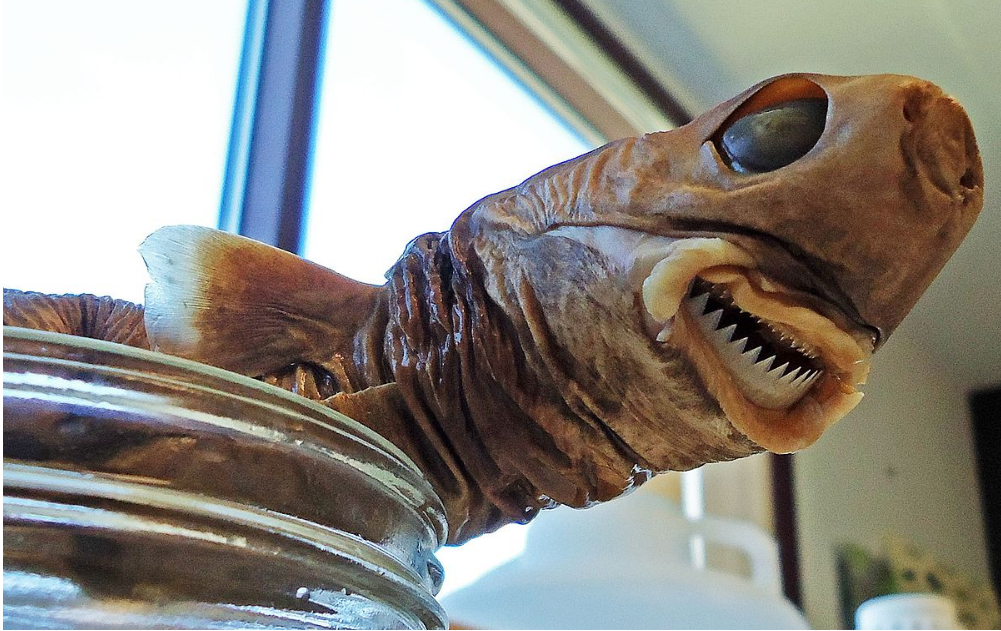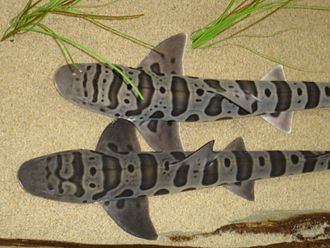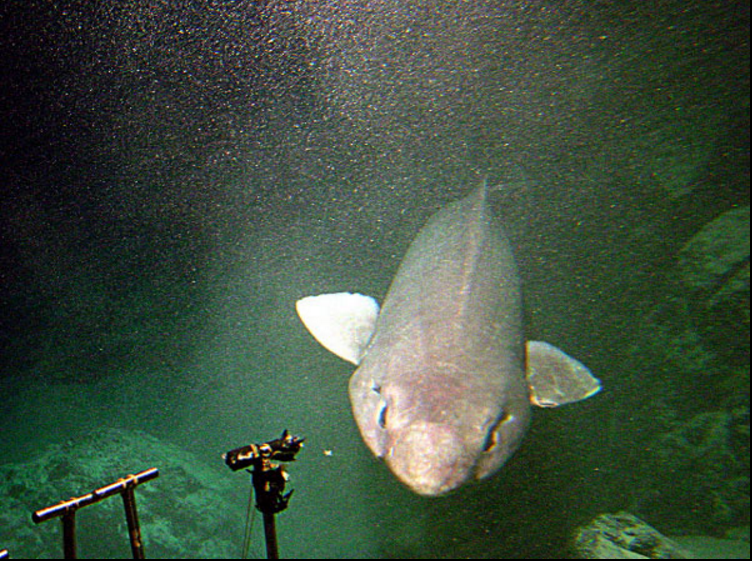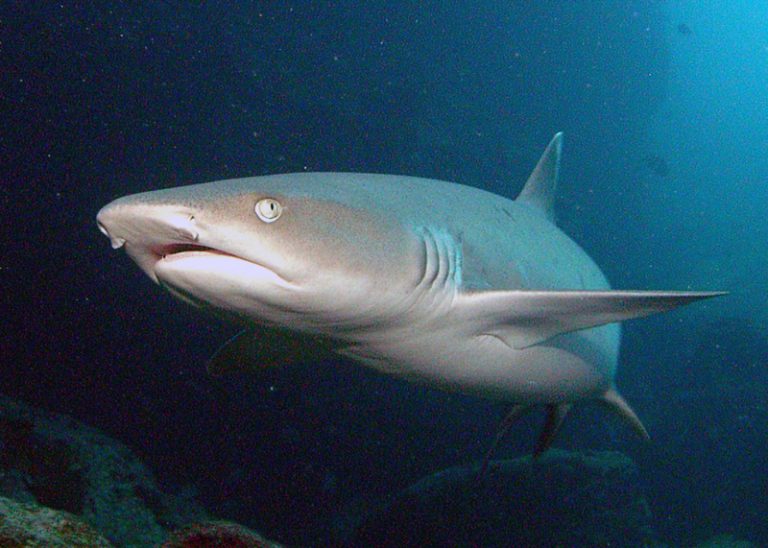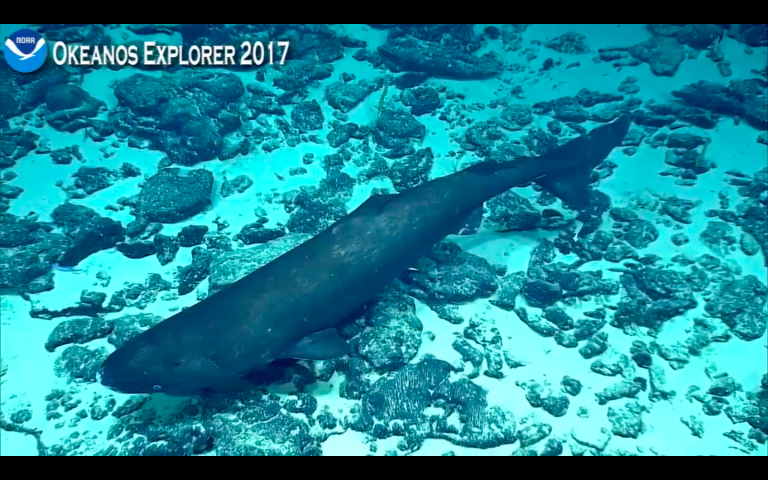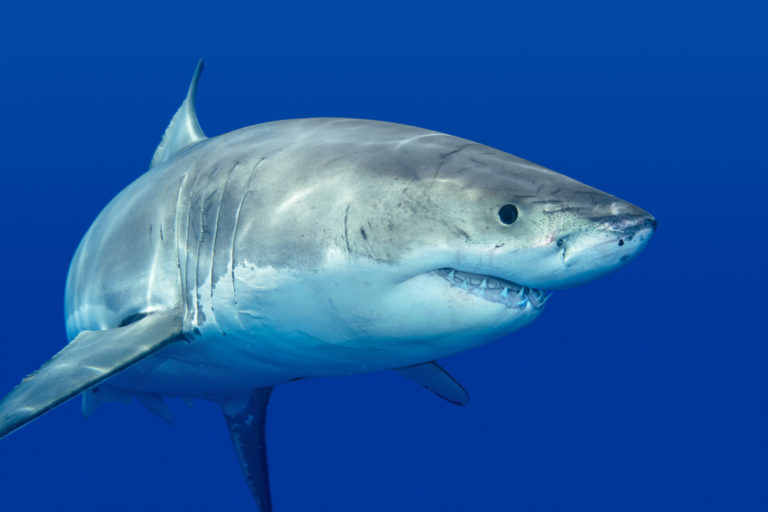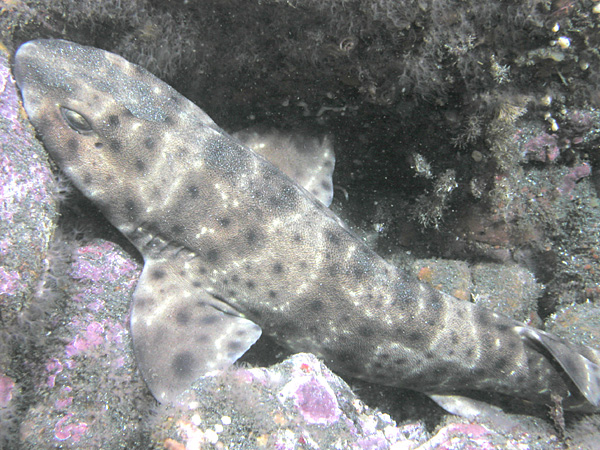Species Profile: The Cookiecutter Shark
The cookiecutter shark got its name from the round, cookie shaped wounds it leaves on its victims bodies.
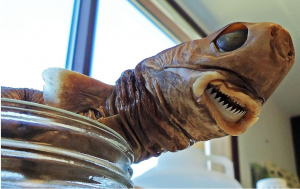
The Cookiecutter shark is commonly referred to as the ‘cigar shark’ due to its long, cylindrical shape. This shark species is a small dogfish and it earned the intriguing name of cookiecutter because of its habit of gouging out round plugs of flesh from much larger animals. As a result of this biting pattern, the wounds look like they were made by a cookie cutting tool.
It is found worldwide particularly in warm waters around islands. Thus, it’s not uncommon to find round, crater-like wounds and scars on a wide variety of marine mammals and fish all thanks to this shark. Bite marks from the cookiecutter shark are also often found on undersea cables, submarines and even human bodies.
In addition to its cylindrical body, the cookiecutter shark has a short, blunt snout, and relatively large eyes for its size. It also has two small and spineless dorsal fins, a large caudal fin, and light-emitting photophores on its underbelly.
1) Scientific Name
Isistius brasiliensis
2) Scientific Classification:
- Kingdom: Animalia
- Phylum: Chordata
- Class: Chondrichthyes
- Order: Squaliformes
- Family: Dalatiidae
- Genus: Isistius
3) Life Expectancy
Up to 25 years.
4) Average/Maximum Length
This is a small shark though the females of the species are slightly larger than the males. Adults average from 16.5 to 22 inches (42 to 56 cm.)
5) Average/Maximum Weight
Not documented.
6) Maximum swimming speed
Unknown.
7) Danger To Humans
Although it’s rarely encountered by people, a few documented attacks on humans were attributed to cookiecutter sharks. Nevertheless, it’s still not rated as highly dangerous due to its diminutive size.
8) Reproduction Details
The cookiecutter shark is aplacental viviparous just like other dogfish sharks. The males of this species reach sexual maturity at 14 inches (36 cm.) long, and females at 15 inches (39 cm.) long.
Females of the species have two uterus and typically produce litters of 6 to 12 pups. Developing embryos are sustained by egg yolk till birth. Newborn cookiecutter sharks measure about 5.5 inches (14 cm.)
9) Diet/Hunting Pattern Of The Cookiecutter Shark
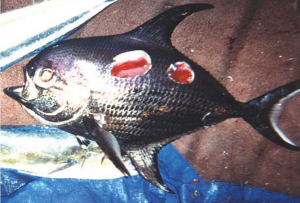
Cookiecutter sharks feed in a parasitic manner. Though this shark may be small, there is hardly any medium to large-sized sea animal that has not experienced its bites. Cookiecutter bite scars are regularly found on porpoises, dolphins, beaked whales, sperm whales, baleen whales, different kinds of seals, and almost every species of shark including basking sharks, megamouth sharks, and even great white sharks. Others include all stingrays and a variety of bony fish.
It has developed an interesting strategy for drawing prey (and predators) to its mouth. Its glowing underside allows it to blend in with moonlight when viewed from below while a dark, unlit collar around its neck makes it look like a small fish. When other animals approach it expecting a meal, the cookiecutter shark will latch onto them instead and begin to bite. It can also suck in prey whole depending on the size of the prey.
The shark has a mouth and saw-like teeth that are designed especially for its feeding style. The mouth is short and surrounded by large, fleshy, suction lips. It has 30 to 37 rows of teeth in the upper jaw and 25 to 31 rows in the lower one and these teeth increase with age.
It secures itself to the body of its prey by using its lips and tongue to create a strong suction seal on the skin of the targeted animal. This shark will then quickly cut into the flesh with its razor-like teeth and spin its body round to make a clean crater-like cut.
The wound it leaves measures about 2 inches (5 cm.) across and 2.8 inches (7 cm.) deep.
10) Alternative Names
- Luminous shark
- Smalltooth cookiecutter shark
- Smooth cookiecutter shark
11) Population And Conservation Status
The International Union for Conservation of Nature (IUCN) lists the cookiecutter shark under Least Concern. This is because it’s widely distributed and it has no commercial value to fisheries or other human interests.
12) Ancestry And History
The earliest specific references to the cookiecutter shark dates back to the early 1800s. Two French naturalists, Jean René Constant Quoy and Joseph Paul Gaimard, first described this shark during an exploratory voyage.
They named it Scymnus brasiliensis because it was caught off the coast of Brazil. Years later, an American ichthyologist, Theodore Nicholas Gill, named it under the genus Isistius after Isis, the Egyptian goddess of light.
For centuries, people could not understand why so many sea animals would turn up with round chunks of flesh missing from their bodies. Some stories said these creatures were leaving parts of their flesh behind as a sacrifice.
Other people thought it was due to bacteria or invertebrate parasites. It wasn’t until 1971 before it was discovered that the ‘cigar shark’ was responsible for the wounds.
13) Distribution And Habitat
Cookiecutters inhabit all the major tropical and warm-temperate oceans. It has been sighted off the Bahamas, southern Brazil, Cape Verde, from Guinea to Sierra Leone, southern Angola, and South Africa.
Also its been found from Mauritius to New Guinea, Australia, New Zealand, and Japan. Other sightings are in the central and eastern Pacific, and it may appear as far as California sometimes.
It spends its day down at depths of about 2.3 miles (3.7 km) from the surface, and at night it rises upwards but it rarely ever reaches the surface.
Though this shark is small, don’t underestimate it. It’s not likely to kill a person one-on-one but it will definitely leave its victims with some nasty bites and scars. Remember also that they often move in groups, each individual shark ferocious in its own right.
In fact, its biting technique is so frightening that it featured in a 2011 horror film called Shark Night 3D!

